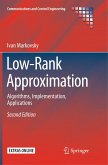This book provides an introduction to Swarm Robotics, which is the application of methods from swarm intelligence to robotics. It goes on to present methods that allow readers to understand how to design large-scale robot systems by going through many example scenarios on topics such as aggregation, coordinated motion (flocking), task allocation, self-assembly, collective construction, and environmental monitoring. The author explains the methodology behind building multiple, simple robots and how the complexity emerges from the multiple interactions between these robots such that they are able to solve difficult tasks. The book can be used as a short textbook for specialized courses or as an introduction to Swarm Robotics for graduate students, researchers, and professionals who want a concise introduction to the field.
Bitte wählen Sie Ihr Anliegen aus.
Rechnungen
Retourenschein anfordern
Bestellstatus
Storno









